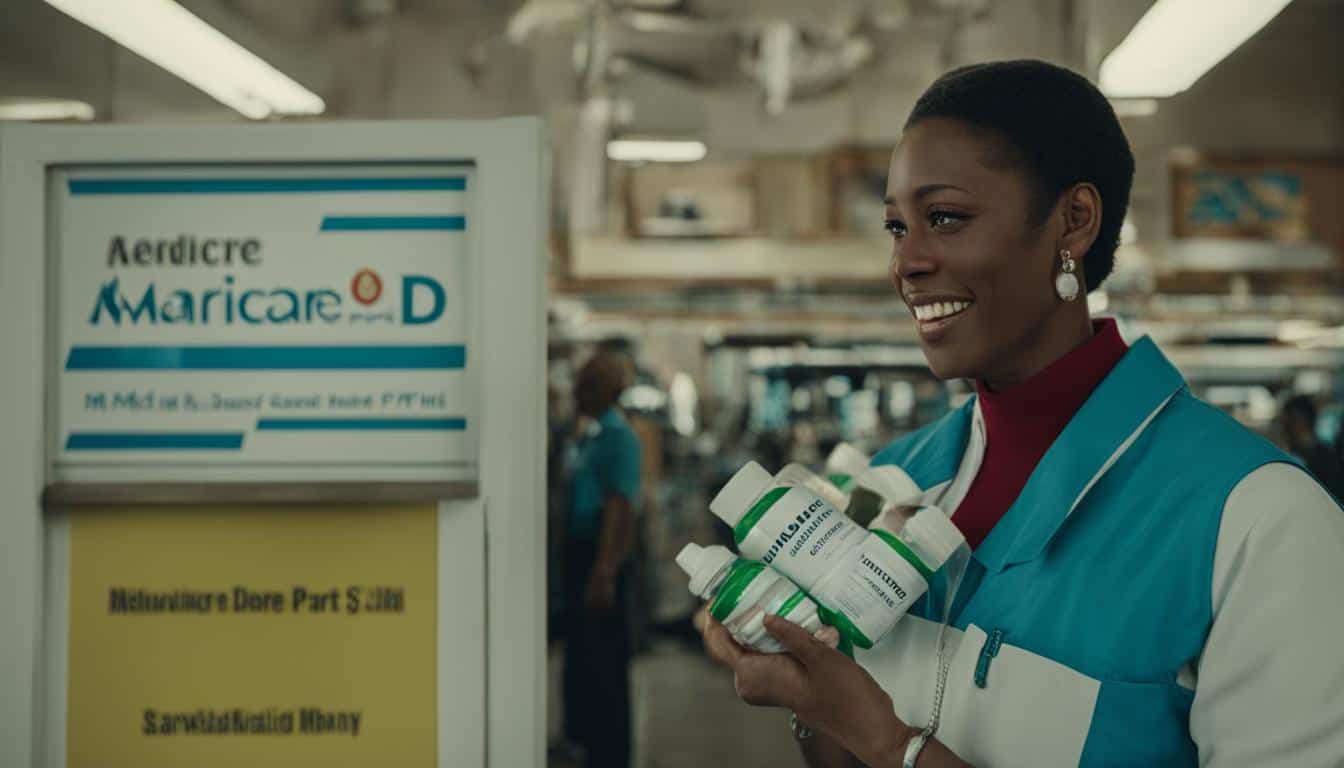Reducing Your Medicare Part D Costs: Effective Strategies for Savings
If you’re looking for ways to save on Medicare Part D expenses, you’ve come to the right place. Prescription drug costs can quickly add up and strain your budget, but there are several cost-cutting options available to you. At Integrity Now Insurance Brokers, we’ve compiled a list of effective methods for reducing Medicare Part D costs.
Key Takeaways:
- Lowering prescription drug costs can help you save money on Medicare Part D.
- Comparing Part D plans can significantly impact your overall costs.
- Utilizing prescription drug assistance programs can provide additional savings.
- Opting for generic medications over brand-name drugs can lower your medication expenses.
- Medication Therapy Management programs can help you optimize your medication while minimizing costs.
Understanding Medicare Part D
Medicare Part D is a federally funded program designed to help eligible individuals pay for prescription drugs. Administered by private insurance companies, Medicare Part D plans offer a range of options, including standalone prescription drug plans (PDPs) and Medicare Advantage plans with prescription drug coverage (MAPDs).
Medicare Part D enrollees can choose from numerous plans, each with its own list of covered drugs, formulary, and network of pharmacies. Your drug costs will vary depending on the specific plan you choose. However, there are several Medicare Part D cost-saving measures that can help reduce your prescription drug costs.
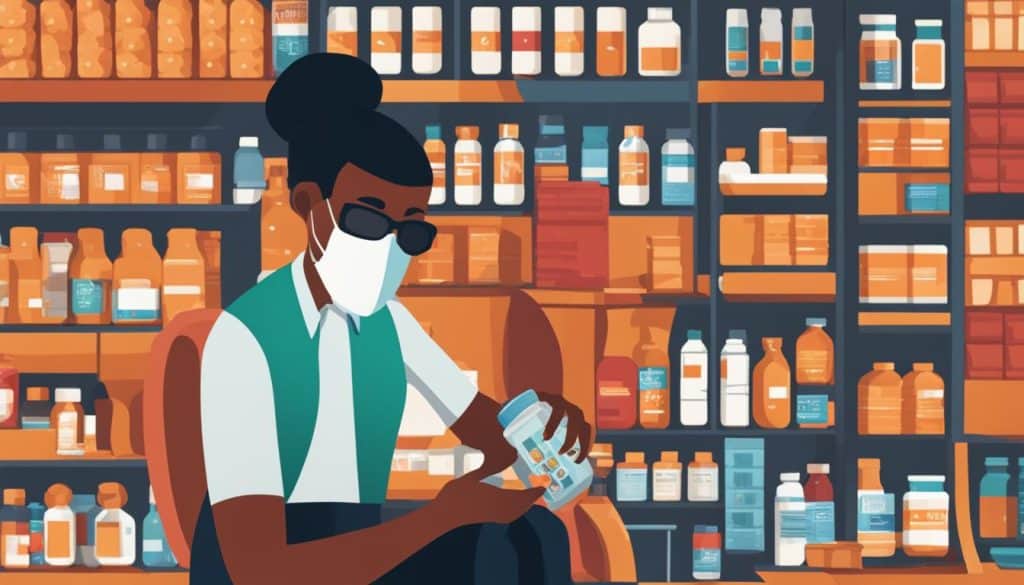
How Prescription Drug Costs are Covered under Medicare Part D
Under Medicare Part D, prescription drug costs are divided into several phases:
| Phase | Out-of-Pocket Costs |
|---|---|
| Deductible Phase | Enrollees pay 100% of prescription drug costs until they meet their plan’s deductible. |
| Initial Coverage Phase | Enrollees pay a copay or coinsurance for each prescription drug until their total drug costs reach the initial coverage limit. |
| Donut Hole or Coverage Gap Phase | After reaching the initial coverage limit, enrollees pay a percentage of the prescription drug costs until they reach the catastrophic coverage threshold. |
| Catastrophic Coverage Phase | Enrollees pay a small copay or coinsurance for each prescription drug for the remainder of the year. |
It’s crucial to understand these phases when developing strategies for reducing your prescription drug costs under Medicare Part D.
Comparing Part D Plans
Choosing the right Part D plan is an essential step towards lowering out-of-pocket costs for Medicare Part D. With numerous options available, it’s crucial to compare the plans and identify the one that suits your specific needs and budget best.
Integrity Now Insurance Brokers, an independent insurance agent, can help you compare Part D plans and find savings opportunities that meet your healthcare needs.
Factors to Consider When Comparing Part D Plans
When comparing Part D plans, it’s essential to consider the following factors:
| Factor | Description |
|---|---|
| Monthly Premium | The amount you pay each month for the plan. |
| Deductible | The amount you must pay out-of-pocket for your prescriptions before your plan coverage begins. |
| Covered Drugs | The list of prescription drugs that the plan covers. |
| Copayments and Coinsurance | The amount you pay for each prescription. Some plans have tiered pricing, where each tier corresponds to a different copayment amount. |
| Restrictions and Limits | The limitations that the plan imposes on prescription drug purchases include quantity limits and prior authorization requirements. |
By comparing these factors, you can identify the plan that offers the most cost-cutting options for Medicare Part D and meets your specific needs.
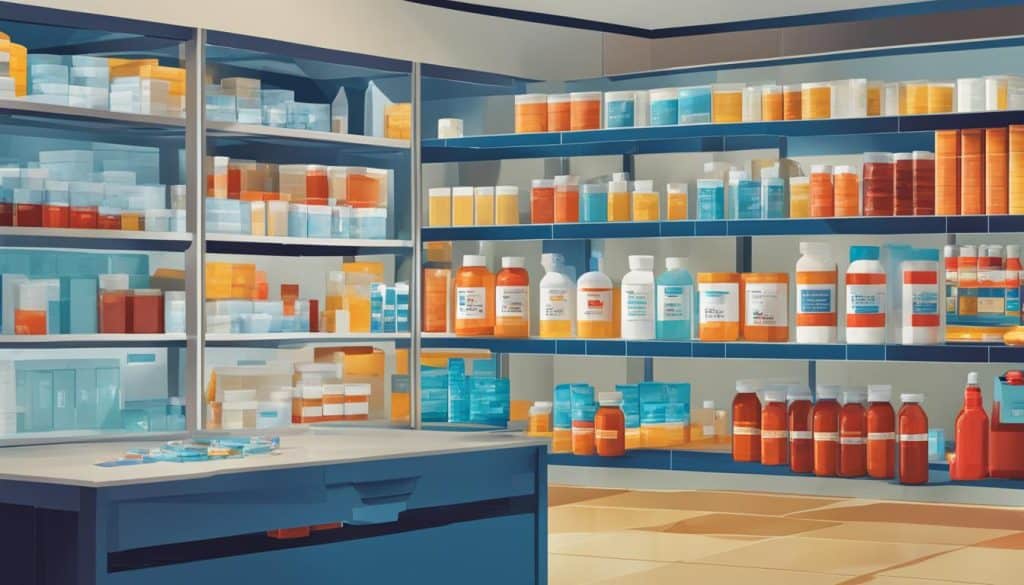
Enrollment Periods for Part D Plans
The enrollment periods for Part D plans include:
- Initial Enrollment Period: The period when you first become eligible for Medicare.
- Annual Enrollment Period: The period from October 15th through December 7th when you can make changes to your Part D plan.
- Special Enrollment Period: The period when you experience a qualifying life event, such as moving to a new state or losing employer-sponsored health coverage.
It’s essential to enroll in a Part D plan during one of these enrollment periods to avoid late penalties and ensure access to prescription drug coverage.
In essence, by comparing plans and finding one that best suits your needs, you can significantly reduce your out-of-pocket costs for Medicare Part D.
Generic vs. Brand Name Drugs
One effective way to reduce Medicare Part D costs is by considering generic alternatives to brand-name drugs. Although generic drugs are cheaper, they are as safe and effective as their brand-name counterparts. This is because generic drugs have the same active ingredients and are regulated by the FDA.
Opting for generic medications can significantly help lower your prescription drug expenses without compromising the quality of care that you receive. In some cases, Medicare Part D plans may require Prior Authorization before covering a brand-name drug when a generic alternative is available.
However, there are situations where a brand-name drug may be necessary, such as in cases where there is no generic equivalent or if the generic alternative does not work effectively. If you need a brand-name drug, consult your healthcare provider to determine the most affordable options under your Medicare Part D plan.

Generic vs. Brand Name Drugs: Key Differences
| Generic Drugs | Brand Name Drugs |
|---|---|
| Low Cost | High Cost |
| Same Active Ingredients | Different Active Ingredients |
| Regulated by FDA | Regulated by FDA |
| May differ in inactive ingredients | May differ in inactive ingredients |
“Although generic drugs may not have the same brand recognition as their brand-name counterparts, they are equally safe and effective. By opting for generic medications, you can save a considerable amount of money on Medicare Part D costs.” – Integrity Now Insurance Brokers
When selecting between generic and brand-name drugs, consider your primary healthcare provider’s advice and consult with your Medicare Part D plan to ensure you understand the cost-saving measures. Sometimes, opting for generic medication can reduce medication costs significantly.
Medication Therapy Management
If you’re looking for effective strategies to lower Medicare Part D costs, Medication Therapy Management (MTM) programs could be a great option for you. MTM programs are designed to help patients optimize their medication regimen while minimizing costs. MTM services are typically provided by a licensed pharmacist, who will review your medications to ensure that they are being used safely and effectively.
During an MTM appointment, your pharmacist will create a detailed medication list and review your current drug therapy. They will also identify any potential drug interactions or adverse side effects and provide recommendations to optimize your medication plan. Additionally, your pharmacist may be able to suggest more affordable medications or ways to reduce the costs of your current prescriptions.
Integrity Now Insurance Brokers, an independent insurance agent, recommends that you check whether your insurance plan offers MTM services. You could also check for Medicare Part D plans that offer MTM benefits.
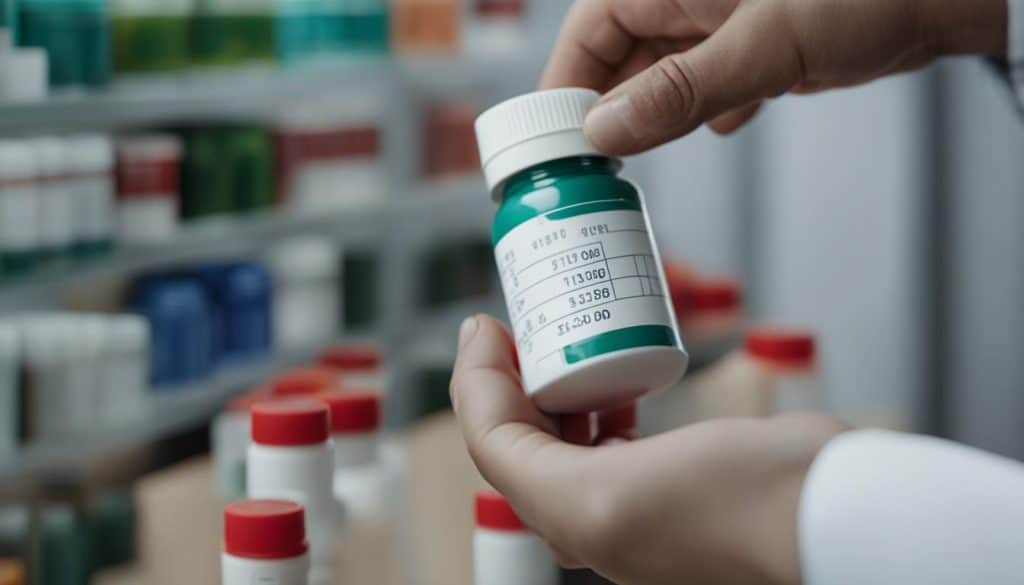
Benefits of Medication Therapy Management
MTM can provide numerous benefits, including:
| Benefit | Description |
|---|---|
| Reduced Healthcare Costs | By optimizing your medication plan, you can avoid costly medical treatments and hospitalizations. |
| Better Medication Adherence | MTM can help you take your medications as directed, resulting in better health outcomes. |
| Improved Safety and Efficacy | By identifying potential drug interactions or adverse side effects, MTM can help you avoid medication-related problems. |
Utilizing Preferred Pharmacy Networks
Did you know that some Part D plans offer preferred pharmacy networks that can help you reduce your prescription drug costs? By using a pharmacy within the preferred network, you may be able to get your medications at a lower cost compared to a pharmacy outside of the network.
Integrity Now Insurance Brokers, an independent insurance agent, encourages seniors to explore these preferred pharmacy networks and take advantage of the potential savings they offer.
If you are considering a Part D plan that offers a preferred pharmacy network, it’s essential to review the network’s list of participating pharmacies to ensure that a preferred pharmacy is easily accessible to you.
Additionally, some Part D plans may require you to use a preferred pharmacy to receive maximum cost-saving benefits. Be sure to review your plan’s policy regarding preferred pharmacy networks and determine if using one is right for you.
Check with Integrity Now Insurance Brokers if you have any concerns or questions about using preferred pharmacies or need help choosing a plan that best fits your healthcare needs and budget.
Takeaway
Preferred pharmacy networks are an excellent way to reduce your prescription drug costs under Medicare Part D. Utilizing these networks can be particularly beneficial if you take several medications or if you are looking for ways to further reduce your out-of-pocket expenses. Consider exploring preferred pharmacy options when choosing a Part D plan to maximize your potential savings.
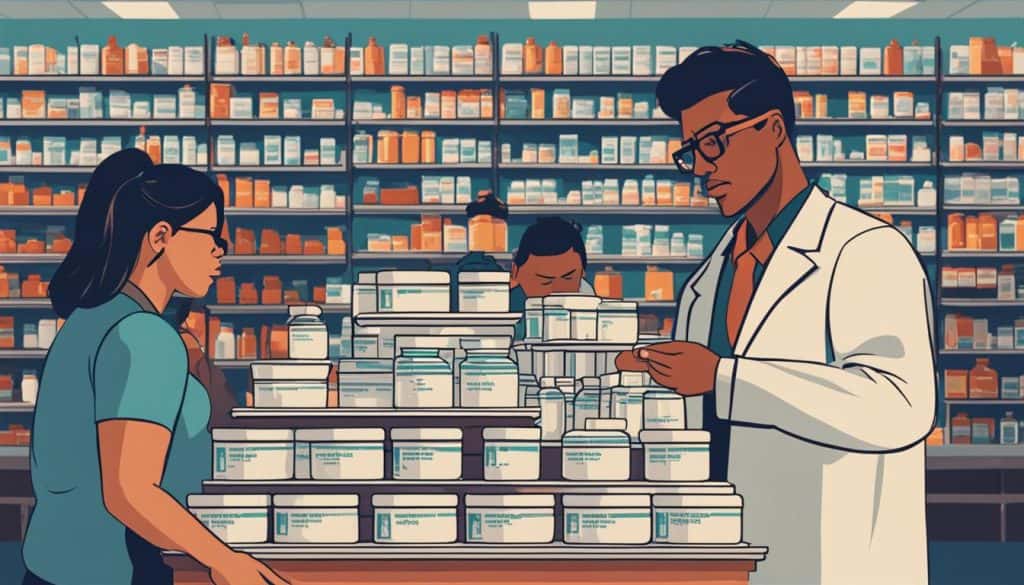
Tip: Keeping detailed records of all medications tried, prior authorizations obtained, and communications with your provider and plan can help streamline the process and potentially avoid unnecessary costs.
Prescription Drug Assistance Programs
If you are struggling to afford your medication costs even after making changes to your Part D plan, there are various prescription drug assistance programs that can help eligible individuals reduce their out-of-pocket expenses. These programs are typically offered by government agencies, non-profits, and drug manufacturers to provide financial aid to people who cannot afford their prescription drugs.
Some of the most widely available drug assistance programs include:
| Program Name | Description |
|---|---|
| Extra Help | An assistance program offered by Medicare to help Medicare beneficiaries with limited income and resources pays for their prescription drugs. |
| Medicaid | A joint federal and state program that provides assistance with healthcare costs for eligible low-income individuals and families. |
| Partnership for Prescription Assistance | A program that connects patients to low-cost or free prescription drug programs offered by pharmaceutical companies. |

Example Table:
| Program/Coupon | Eligibility Requirements | Medications Covered | Savings Offered |
|---|---|---|---|
| Novartis Patient Assistance Foundation | Low income, no insurance coverage for medication | Various Novartis medications | Free medication for up to one year |
| GoodRx | No eligibility requirements | Various medications | Up to 80% off retail price |
| NeedyMeds | No eligibility requirements | Various medications | Varies by medication and pharmacy |
Remember that patient assistance programs and coupons can be a helpful tool in your overall strategy to reduce your Medicare Part D costs. Don’t hesitate to take advantage of these resources if you are eligible.
Conclusion
If you’re looking for ways to reduce your Medicare Part D expenses, the strategies and tips discussed in this article can help you save money on prescription drugs. By effectively reducing your Medicare Part D costs, you can lower your out-of-pocket expenses and keep your healthcare affordable. Remember, understanding Medicare Part D, comparing plans, considering generic drugs, utilizing assistance programs, and taking advantage of preferred pharmacies are all effective methods for reducing your Medicare Part D costs.
As an independent insurance agent, Integrity Now Insurance Brokers can help you navigate the complex world of Medicare. Whether you’re new to Medicare or looking for ways to save on your healthcare expenses, we can provide you with personalized guidance and support. Contact us today to learn more about how we can help you lower your Medicare Part D costs and ensure that you have comprehensive coverage that meets your specific needs and budget.
FAQ
How can I reduce my Medicare Part D costs?
There are several strategies you can implement to lower your Medicare Part D costs. These include comparing Part D plans, opting for generic drugs, utilizing medication therapy management programs, taking advantage of preferred pharmacy networks, navigating prior authorization and step therapy policies, accessing prescription drug assistance programs, and using patient assistance programs and coupons. By exploring these options, you can effectively reduce your medication expenses.
What is Medicare Part D?
Medicare Part D is a program that provides prescription drug coverage for individuals enrolled in Medicare. It helps beneficiaries pay for their prescription medications, reducing out-of-pocket costs and ensuring access to necessary drugs.
How do I choose the right Part D plan?
To choose the right Part D plan, it’s important to compare different options based on factors such as monthly premiums, annual deductibles, copayments, and the list of covered medications. It’s also essential to consider your specific prescription drug needs and preferences. Comparing plans can help you find one that offers the most cost-effective coverage for your unique situation.
What are the advantages of generic drugs?
Generic drugs are equivalent to brand name drugs in terms of safety, quality, dosage, and effectiveness. However, they are typically less expensive. Opting for generics can significantly lower your medication costs, as they are often available at a fraction of the price of brand name drugs.
What is Medication Therapy Management?
Medication Therapy Management (MTM) programs aim to optimize medication use, improve health outcomes, and reduce costs. These programs involve pharmacists working with patients to review their medication regimen, identify potential drug interactions or duplications, and provide recommendations for cost-effective alternatives. MTM programs can help you manage your medications more efficiently while minimizing expenses.
How can I benefit from preferred pharmacy networks?
Some Part D plans offer preferred pharmacy networks, which can provide additional cost savings. By using pharmacies within these networks, you may be eligible for discounted prices on your prescription drugs. It’s important to check if your preferred pharmacy is part of a plan’s preferred network to take full advantage of these potential savings.
What are prior authorization and step therapy?
Prior authorization and step therapy are techniques used by Part D plans to control costs. Prior authorization requires prescribers to obtain approval from the plan before certain medications are covered. Step therapy involves starting with lower-cost drugs and gradually progressing to more expensive options if necessary. Understanding and following these policies can help you manage your out-of-pocket expenses effectively.
Are there any prescription drug assistance programs available?
Yes, there are various prescription drug assistance programs available to help eligible individuals reduce their medication costs. These programs, such as Medicare’s Extra Help program or state-specific pharmaceutical assistance programs, provide financial assistance for prescription drugs based on certain criteria. Exploring these programs can provide valuable cost-cutting options for Medicare Part D beneficiaries.
How can I access patient assistance programs and coupons?
Patient assistance programs and coupons provide additional savings for prescription medications. Pharmaceutical manufacturers typically offer these programs and may offer eligible individuals discounts or free medications. Coupons, on the other hand, can be accessed through various platforms and can help reduce your out-of-pocket costs when purchasing prescription drugs. Researching and utilizing these programs and coupons can help you save significantly on your Medicare Part D prescription expenses.


